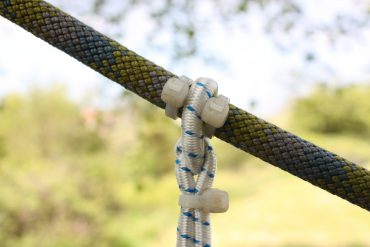Many of us are aware that embedding the new Graduate Qualities in the curriculum has been going on for some time, even prior to the publication of the University’s 2016-2020 Strategic Plan. It’s just a matter of recognising and celebrating this fact, as well as ensuring that it is captured in our Unit of Study Outlines and other curriculum documents. This example from the Sydney Nursing School shows that many of us are already doing this in novel ways. It also shows the benefits of engaging with units outside your school or faculty to achieve the desired result.
Dr Jo River from the Sydney Nursing School, together with Isabelle Raisin and Julia Child from the University Library, have developed a novel way to develop information literacy skills.
From the outset Jo, Isabelle and Julia understood the importance of information literacy teaching being embedded in units of study. In 2013 the library team started to work with Dr River on NURS1006 Understanding Experiences of Illness, to develop skills around searching academic databases for qualitative literature. This Semester 2 unit was one of four core first year units identified for information literacy based teaching.
Students benefit from ongoing formative feedback which supports their learning
The development process was incremental and continued through 2103-2017 with Jo, Isabelle and Julia continuing to embed information literacy skills in the NURS1006 unit to maximise student learning outcomes and the development of graduate qualities.
Dr River developed a lecture that provided a clear rationale for engaging with qualitative illness experience literature, in particular, how this research base was relevant to clinical practice. Isabelle and Julia developed lecture and tutorial materials (theory and practice) to explore the complexities of searching for qualitative literature and how to identify qualitative literature in search results. The library-academic team then found ways to link content to assessment items. NURS1006 uses a blended team learning approach. Blended team learning aims to promote students’ theoretical knowledge, as well as their ability to apply theory in practice. It incorporates learning techniques such as flipped classroom, formative and summative immediate feedback assessment and ‘real-world’ clinical scenarios. Content delivered by library staff was integrated into all aspects of this model of learning. Information literacy content and skills were embedded in online learning, instant feedback assessments and application scenarios. In line with the University’s graduate qualities, this integrated, blended team learning approach advances students’ abilities in developing and applying disciplinary expertise, engaging critically with nursing knowledge, working within teams and exercising professional and social responsibility.

Effective use of educational resources and technologies
Dr River uses a flipped class-room approach, specifically incorporating a ‘study guide’ with embedded online materials that can be accessed in advance of classes. Library staff have developed specific online materials, which have been embedded into the study guide and used by students to prepare for classes and assessments. Materials included a video on Searching for Qualitative Literature which students could use to prepare, leaving the workshop free for hands on experience of searching with support from the lecturer and library staff.
The practical sessions where students worked together and applied theoretical knowledge to clinical scenarios meant that they needed to actively engage with search techniques, rather than just hearing about them. Supporting resources such as video demonstrations allowed students to reflect and practice in their own time before and after the hands-on sessions to further consolidate their understanding.
An integrated blended team learning approach also supports the development of more complex communication skills
Benefits for students
Students have benefited significantly through this approach. They have:
- More practical experience hands-on
- Connected to other units with repeated opportunities to practice
- Immediate feedback during practical sessions leading to faster learning
- Developmental progress and ongoing formative feedback supporting their learning
- Experiential team learning which supports the development of more complex communication skills
- Authentic learning experiences which simulate how they will work together in professional practice.

Future work
The unit continues to be tweaked and improved following feedback each semester. Julia Child recently undertook curriculum mapping of the course which further highlighted how deeply embedded information literacy is within it. This exercise also provided further insights into other ways to improve teaching and to further advance information literacy skills. As more refinements were made in Semester 1, 2017, Dr River worked with the library team to adapt the teaching in NURS1006 to bridge any resulting knowledge gaps.
The library staff also work closely with academic staff in another unit, NURS1007 Nursing Research, where quantitative rather than qualitative studies are the focus, ensuring consistency across the units and providing further searching experience.
Hear the full story
Check out the recording of their 2017 Sydney Teaching Colloquium presentation below.





